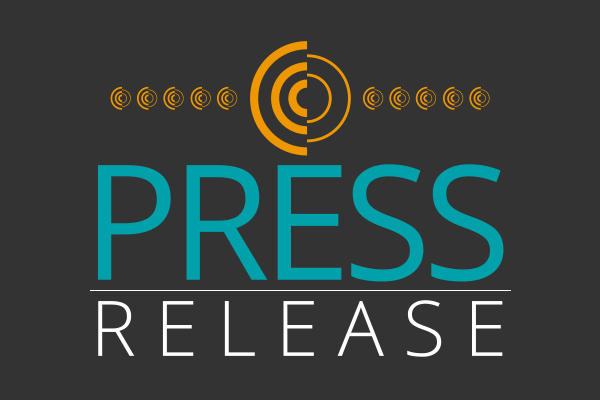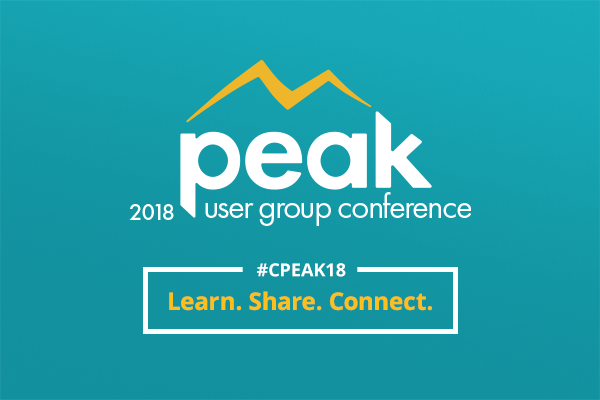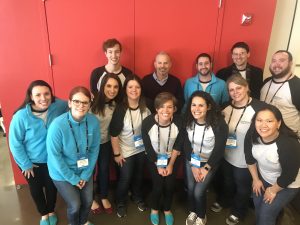
by Samantha Howard | Jul 17, 2018 | News
Columbia, MD – July 17, 2018. CommPartners, a leading provider of Learning Management Software, webcast, and livestream solutions, and BadgeCert, a leader in digital badging/credentialing announce they have formed a partnership to fully integrate BadgeCert’s digital credentialing services with CommPartners’ Elevate Learning Management System. Through this integration, digital badges or credentials can be automatically awarded based on participation or achievement in education programs offered through Elevate LMS.
Digital Badges have become increasingly important as a verifiable way to measure competency and share levels of expertise. Through the integration with Elevate, host organizations will be able to offer digital badges with detailed metadata for stackable or micro credential programs. Badges can be custom designed through standard templates or organizations can upload their own designs. Each learner will have a universal portfolio to manage and share earned badges.
“Validation through digital badges has become critically important as a way to verify achievement,” states Richard Finstein, CEO of CommPartners. “We have known the folks at BadgeCert for many years. When we searched for a partner, we wanted a company that is as committed to customer service as we are.”
“We are thrilled to partner with CommPartners as they have consistently exceeded their clients’ expectations with respect to high quality customer service and technology innovation,” says Ginger Malin, Ph.D., Founder and EVP of Business Development at BadgeCert. “This partnership will provide organizations with a seamless administrative experience, while also delivering significant value to learners as they can now digitally share their verified credentials across the web.”
About BadgeCert
BadgeCert enables your organization to recognize stakeholders’ accomplishments with 100% verifiable digital badges. The company was founded by expert educators, technologists and entrepreneurs on the premise that recognizing effort, participation, contributions and accomplishments is important to motivate people to develop, progress and achieve. To learn more visit www.badgecert.com.
About CommPartners
CommPartners is a leading provider of online education and event solutions. At the core of the company’s solutions is our Elevate Learning Management System. To extend the value of Elevate LMS, we provide a wide range of online education services including curriculum design, instructional design, fully managed webinars, webcasts, livestream programs and virtual conferences. To learn more about CommPartners and Elevate LMS visit www.commpartners.com or contact Meghan Gowen at mgowen@commpartners.com.

by Aubrey Mellos | May 31, 2018 | Blog
Guest blog by our partners at WebMechanix
Creating a webinar that sells is one of the best ways to generate revenue online. There’s no better way to get in front of your target audience and wow them.
So, are you sure you’re fully optimizing your webinars for conversion? The truth is everything from promotional emails, to how you hook attendance, to how you present your offer ultimately affects your sales.
After extensively researching webcast and webinar best practices, and drawing from our own experience, we have found some powerful ways to optimize webinar sales.
Today, we’re sharing the top six webinar tips and tricks that have the highest impact on the bottom line.
The class is in session…
1. Prepare and Practice
WebMechanix marketing manager, Clare French, has conducted countless webinars over the years. She highly recommends making sure you plan and practice beforehand.
You’ll want to outline the marketing automation plan for your webinar follow-up process early. Nail down the dates you’ll have your slides and other content emailed to your attendees, and have your sales and support teams follow up personally with prospects and customers afterward.
Many platforms have a practice mode for presenters to sync up just before the event starts. Taking a few minutes to make sure everyone is on the same page about the technical set-up and behind-the-scenes communication is invaluable to the attendee experience. There’s nothing worse than a presenter fumbling through the presentation because they don’t know the basics of the tool.
Schedule at least one practice run 3-5 business days before the event. Doing it earlier allows more time to make changes and regroup once more if needed.
Always give “housekeeping” tips at the start of a webinar to let attendees know how to communicate with the presenters. These tips should set the precedence for when questions are answered (in the moment versus at the end), and gives you the opportunity to set expectations about following up with attendees.
2. Use Organic (and Paid) Social Promotion Beforehand
Your webinar is a one-time, live online event. It’s powerful because you get to interact live with your audience. Squeeze all the juice out of it by filling as many seats as you can.
When it comes to webinar promotion best practices, be sure to get all the presenters and partners to promote the webinar on their social and professional profiles beforehand. Also, if you have the budget, use paid ads on Facebook, LinkedIn, and even Instagram.
3. The Magic is in the Q&A
Out of our six webinar marketing tips, this simple tweak may yield the most to your bottom line.
Make sure you answer attendee questions and interact with them during your webinar. That’s the beauty of a live event. Otherwise, you may as well do a pre-recorded presentation.
Tim Paige of LeadPages, world record holder for most webinars conducted, tripled revenue and increased attendee stick rate, the percentage of the event an attendee stays, to an impressive 98%. He did so with one tweak: answering questions during the presentation rather than at the end.
When answering questions, keep it natural. Make sure you don’t destroy the flow. Answer a handful of questions at regular intervals during your webinar. Mention the inquirer’s name and the question out loud before you answer to re-engage attendees.
4. Measure Yourself Against Benchmarks
Webinar engagement metrics (based on CommPartners clients) typically look like:
- 50% attendance rate for free events; 65-75% for paid or credit events
- 75-80% participate in polls
- 5-10% participate in the chat
- 50-60% download presentation slides
By using benchmarks, you can effectively gauge the success of your webinar optimizations. If your live events aren’t performing as well as you’d hope, benchmarks can help you can identify potential issues and adjust. Stats can give great insight into how you can improve your webinar engagement and stick rate. For example, considering using emoticons and interactive behavior to help with stick rate.
5. Provide a Real Phone Number
At the end of your webinar, offer a number for people to call with questions. You often can’t answer everything on the presentation and prospects may only think of a good question after it’s over.
Russell Brunson, the founder of an eight-figure SaaS company, was already implementing a ton of webinar tips and tricks. Then, he tried something new that increased webinar sales by 25%. At the end of his webinars, he offered a Google Voice phone number to call and leave questions — and he called everyone back with an answer.
If you have call center capacity, consider experimenting with a live phone number to answer questions immediately. There’s a reason why infomercials do this: it works. Creating a webinar that sells depends as much on the quality of the follow-up process as the event itself.
6. Double Down on What’s Working
After you have a few webinars under your belt, you’ll notice specific parts of the process that catapult results and others that peter out. To sculpt the perfect webinar, double down on what’s working.
If storytelling balloons attendance, duration, and sales conversion, do it more often. If sending three emails instead of four before the event leads to more attendees, send three. If a tweak to your Facebook ad doubles conversion rate, scale up your ad budget.
This tip may sound more like common sense than an effective webinar tip, but common sense isn’t always so common. With all the moving parts to hosting a webinar, it’s easy to forget about doing more of what’s working when there’s so much to juggle.
Every part of the process has room for optimization.
Pro Tip: If you change your Facebook ad creative to focus on the solution you offer rather than your personal branding and face, it performs better with a cold audience. Your face doesn’t convert as well because they don’t know who you are yet.
Conclusion
By implementing these six webinar tips and tricks, you’ll see higher attendance, more engagement, and a more extended attendee stick rate. And all of these tactics together help you create a webinar that sells.
Since webinars can get confusing with all the moving pieces, focus on these fundamentals, and you’ll be on your way to a sales-optimized webinar process with a lot less headache.
What’s your favorite part of a webinar?
As a webinar production company, CommPartners has over 25 years of experience providing webinar and webcast hosting services to clients. If you’re looking for someone to host your webcast, or need general help with webinar management, fill out our online contact form or give us a call at (800) 274-9390 to see how we can help.

by Rich Finstein | May 7, 2018 | Blog
When an organization begins the process of evaluating LMS options, they typically will start by developing a list of features that should be included. Confirming this list helps to identify ideal candidates. While the feature set is critical to narrow an organization’s search process, often an element that is overlooked, at least initially, is the User Experience or “UX”.
The UX as defined in Wikipedia refers to: “A person’s emotions and attitudes about using a particular product, system or service. It includes the practical, experiential, affective, meaningful and valuable aspects of human–computer interaction and product ownership.”
So much of what we do today is defined by the user experience. An impactful example is the mobile device we interact with hundreds of times a day. UX design also applies to mundane products such as a coffee cup or the toothbrush we use. But how about interacting with an LMS? If we want to ensure that learners have an excellent experience when accessing education opportunities, it’s critical to make sure that every element of our learning management site is attractively designed, intuitive to navigate, is relevant and meaningful.
Here are five recommendations to ensure your Learning Management System fulfills your learners’ expectation of an exceptional user experience:
- Choose an LMS that provides complete control of every aspect of the design.
You have invested in the development of your website to ensure it presents your organization in the best possible way. You most likely do not want to implement an LMS that feels like a separate component. Ideally your learning site will be nimble enough to incorporate your website styling, navigation, layout, imagery, fonts and taxonomy. Having an LMS with visual congruence to your website will eliminate a disconnect of having two separately hosted online components.
- Ensure that your LMS works seamlessly with your ecosystem of applications including your AMS (database) and private online community.
When a learner moves to and from your LMS, does the experience feel disjointed? It is important to provide visual congruence through your entire ecosystem of web platforms so the user experience will be not be compromised. In addition, it is important to integrate with these systems to ensure login credentials are carried through all applications. This will create seamless navigation and enhance the overall experience.
- Establish a style guide to be applied throughout your site.
It’s important to have a set style guide that addresses every design element of your LMS. This applies to both the platform and contents. Choose a platform that provides you design flexibility for all elements. Make sure that your staff or anyone that works with your LMS adheres to your guidelines. It shows when certain elements do not adhere to the standards you have set, therefore compromising the User Experience.
- Create a relevant and simple process for accessing content.
Ideally the LMS experience can be personalized for each learner so when they login in, they are presented content that is relevant to their needs. This can be done in multiple ways. The first is using information you already know about a learner and presenting the right access, pricing and topics. A second way to is to allow the user to set their interests and prioritize the presentation of content based on those interests. Having customized experiences fosters loyalty and return visits to your site. To support simple access of content, avoid scrolling to find programs. Instead, provide the right amount of content per screen.
- Make registration and checkout clean and simple.
Ideally, in a matter of a click or two the learner will be able to register and access their selected program. When they land on the shopping cart page, it should be clean and simple. Once the registration is completed, the learner is seamlessly directed to the content that they register for. When the User Experience is exceptional, the exposure and value of your learning programs is increased. The UX represents you in a highly public way and it’s important to ensure it positions your organization for success.
If you would like more information on UX Design for your LMS or the CommPartners Elevate LMS, give us a call at (800) 274-9390 or fill out our online contact form to get in touch with someone.

by Rich Finstein | Apr 5, 2018 | Blog
A year ago we made the decision to host our first User Conference. Since this was our initial event, we had some trepidation about whether our community would embrace the opportunity to join us for several days of education, training and networking. Our decision to move forward was quickly validated as we reached the maximum number of attendees we could accommodate in the venue.
When the first day of the conference arrived, we were excited to see in-person the people we interact with on a daily basis. As I began the initial welcome, I mentioned to the group that this felt more like a social function as opposed to a business event. There was a warm feeling that comes when relationships evolve over time and there is continuity of working with the same team to share opportunities and solve problems. For our team, this conference was an important barometer of where we stand. It’s one thing to have one on one interactions, however it’s an entirely different situation to see many of your clients in one setting. We feel extremely blessed to have had this opportunity.
There are three insights that we walked away with from the event:

Click to view photos from Peak 2018.
- We have a vibrant community that has evolved organically with us over a long period of time. There are no shortcuts in getting to this point. CommPartners has an average employee tenure of 8 years with many staff being with us for 12 to 15 years. At times, we don’t think about how important a factor this is in building close client relationships that lead to greater continuity and trust. You could witness this in real time during the conference.
- Peak served an important purpose of facilitating ideas and proving attendees practical applications they can implement today. One of the greatest benefits was the sharing of best practices and hearing how people in the same position overcome day to day challenges of managing professional development within their organizations. We realized we need to keep this conversation going and not wait until we meet again. Therefore, we launched a number of initiatives to give voice to our clients and allow for ongoing engagement. They include:
- Elevate Advisory Board: This is a 13 member panel group made up of mostly clients to provide guidance and feedback on Elevate’s development, provide feedback on our services and share ideas with other Board members.
- CommPartners Mastermind Groups: These groups bring clients together for 4 sessions to engage around topics of leadership, creative thinking and professional growth.
- CP Connect Community: CP Connect is an online community. It will be launching shortly to continue the conversations and sharing of ideas that occurred at Peak.
- CP Cares: We are expanding our altruistic initiatives to support those in need. We are hoping to involve our clients in these efforts.
- We need to continuously come through for our community. You depend on us. This was evident through the passionate conversations that occurred at the conference. We understand this responsibility. In the coming year we have aggressive plans to bring innovation, additional resources and service enhancements to our clients. We’re excited about growing with you and helping you succeed.
If you have any additional feedback or thoughts about Peak or any other items, please contact me.
All the Best,

Rich Finstein

by Aubrey Mellos | Mar 5, 2018 | Blog
Guest blog by Bobby Kaighn, Higher Logic
Online learning is valuable, convenient, and scalable, which makes it an ideal benefit for associations. In the last few years, online learning has also proven to be very popular for members who want to advance their careers.
But many online learning programs aren’t as effective as they could be. Most courses are meant for individuals, which can feel isolating to some members, while other learners may find it difficult to apply online concepts in their daily lives.
Online learning communities can help.
By pairing your online learning programs with an online community, you can improve the member experience and help information stick, which will make your programs more effective. It could even boost enrollment.
Here are four ways community can improve online learning.
Four Ways An Online Learning Community Can Improve Your eLearning Program
1. Community Discussions Keep Learners Engaged
Coursework, no matter how interesting, can be tiring. An online learning community adds an interactive element to elearning courses, including peer discussions, file libraries, blogs and emails.
Learners can use these tools to connect with their peers and start conversations about course topics. They can also ask questions and share their thoughts on how course material relates to their lives. All this interaction helps learners engage with your courses and can make the material in them more meaningful.
2. Peer Support Helps Learners Complete Courses
Unlike traditional education, online learning doesn’t have a built-in support system. You can’t walk up to a professor after a lecture to ask a question or form a study group with friends. In online learning, if someone gets stuck on a challenging concept or loses motivation to complete the program, there may not be anyone around to help.
With an online learning community, you give learners that network of peers. You give them a space where they can connect with peers who are also working through the same course and can help them through difficult material. Participants can ask for help publicly through discussion forums or use private email if they don’t want to open their concern up to the group. Their peers can also help motivate them to finish through conversations or by sharing helpful material, just like they would have in a traditional learning environment.
3. Community Mentoring Programs Help Learners Apply New Skills
Many associations use online learning programs to help members with professional development. With an online community, you can add practical experience to online concepts through a mentoring program.
Learners can either sign up for a mentor while they’re taking the course or after completing the program. Their mentor will then help them apply course concepts in their daily lives, giving them advice and tips based on experience.
By using a community mentoring program to help learners apply course concepts, you make it more likely that they’ll remember and use what they learned. That, in turn, translates to members getting more value from your programs.
4. Community Networking Extends Engagement After Learners Finish Courses
Traditional education uses networking tools like class reunions and alumni groups to build deeper, long-term connections between students and organizations. Often, those connections result in generous financial or advocacy commitments to schools.
Your association can use an online learning community for similar benefits. Build a community for your learning program alumni so they can continue networking and stay involved with your association after their courses are over. They can use their new connections to provide continued support, pursue job opportunities, and more. This long-term networking will also help keep your association and its programs top of mind, which could lead to future referrals as alumni find new people who could benefit from your programs.
Use Community to Improve Your Online Learning Programs and the eLearning Experience
Online communities provide the social element that’s often missing with online learning programs. They allow learners to connect with peers, share their thoughts, and get the support they need for a successful educational experience.
And, by improving your online learning programs, you also increase the value members get from your association, making it more likely they’ll stick with you and refer their friends and family.
Some associations choose to invest in a learning management system to create an online community and promote collaboration between learners. If you would like more information on how to create quality educational experiences that engage and inspire the learner, give us a call at (800) 274-9390 or fill out our online contact form to get in touch with someone.








